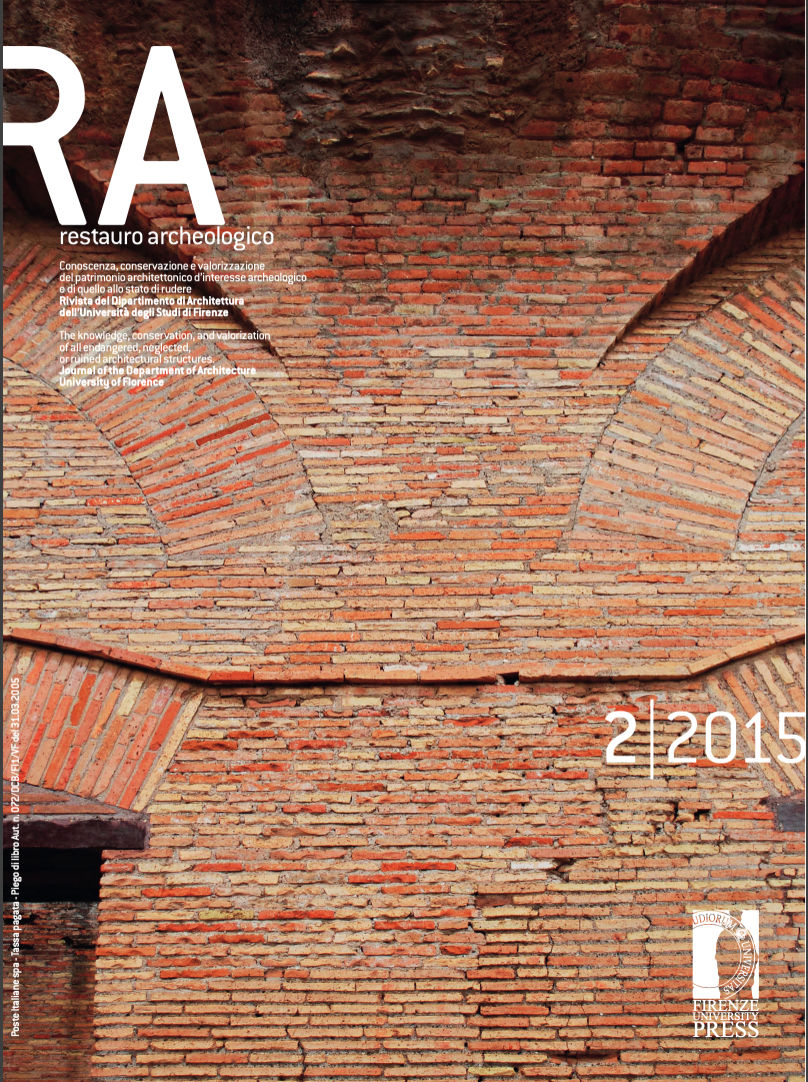Published 2016-07-08
Keywords
- Archaeology,
- Architecture,
- Seismic risk,
- Archaeoseismology
How to Cite
Abstract
In the wide, heterogeneous and average seismic panorama of Italy, characterized by a rich presence of architectural heritage to protect, the recent "Guidelines for the evaluation and reduction of the seismic risk of cultural heritage” (MIBAC, 2010) proposed a solution to regulate all interventions in architecture. More closely, the most evident aspect in the publication is the necessity of an interdisciplinary approach in the study of artefacts, an approach obtainable through the interaction of analysis conducted by both scientific and humanistic disciplines. The application of archaeology to the study of architecture in seismic risk areas can contribute in a significant and innovative way to the knowledge of cultural assets and their context, as requested by the ministerial guidelines. In addition, the results obtained from this kind of approach can provide, both quantitatively and qualitatively, additional information on telluric phenomena in antiquity. This data, if well interpreted, can potentially constitute useful elements for the preventive analysis on buildings and for the seismological knowledge of the territory.


